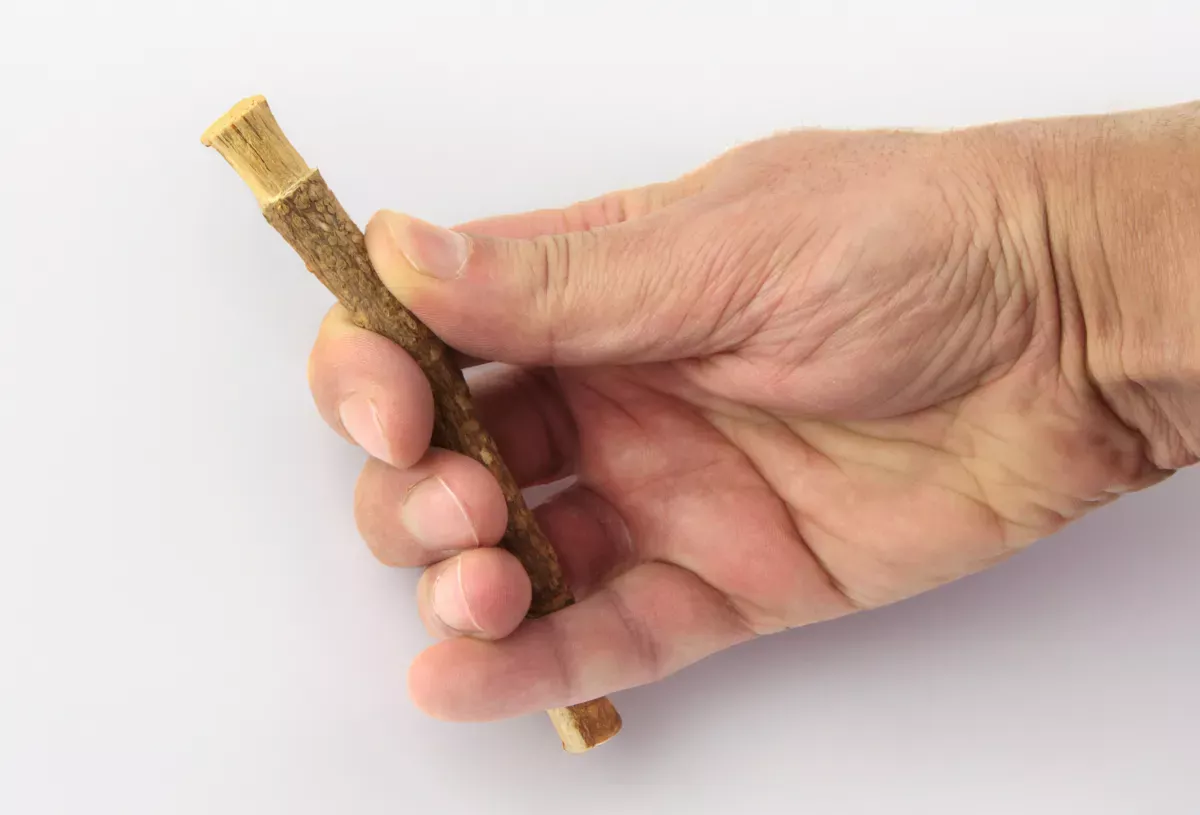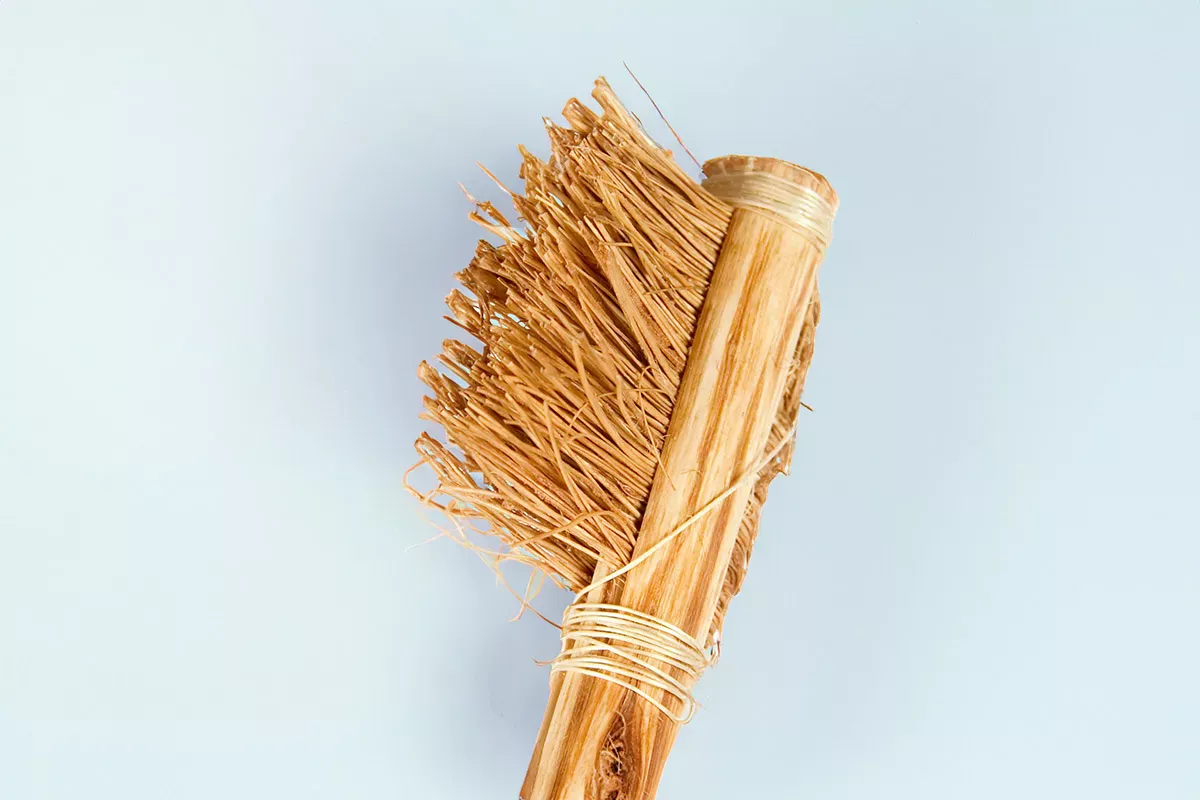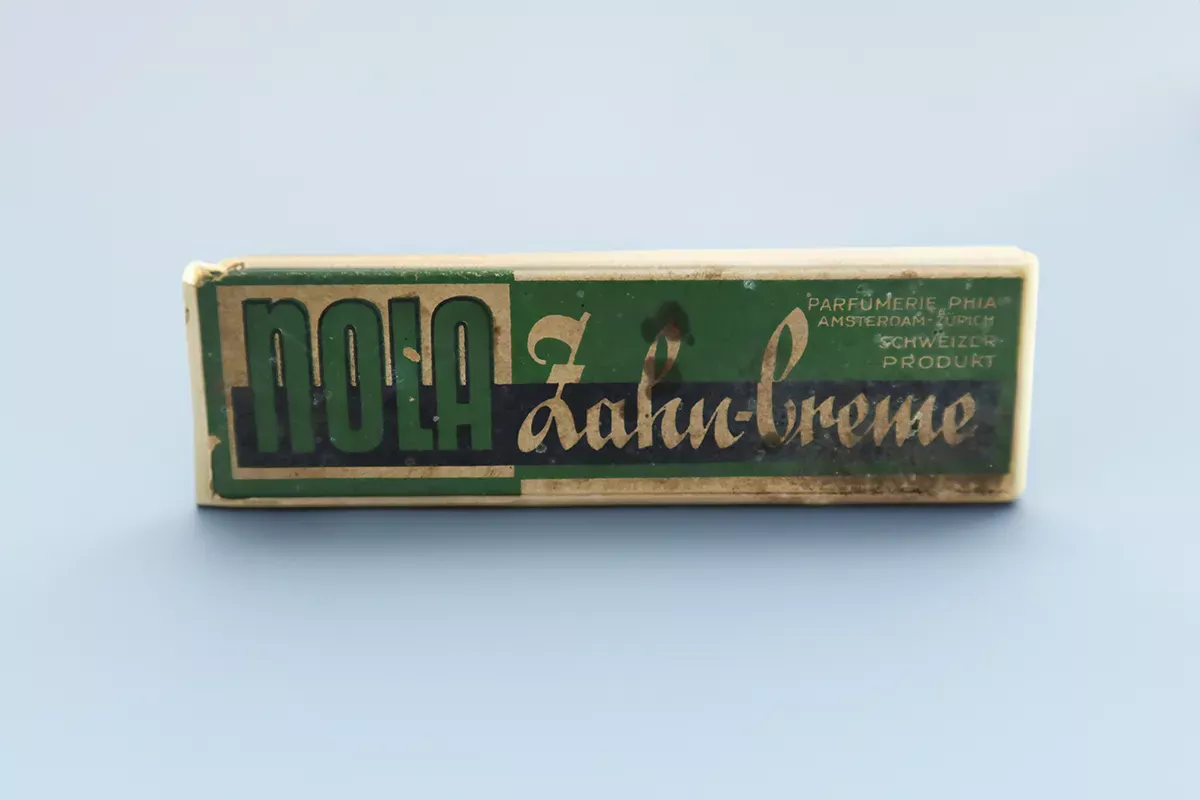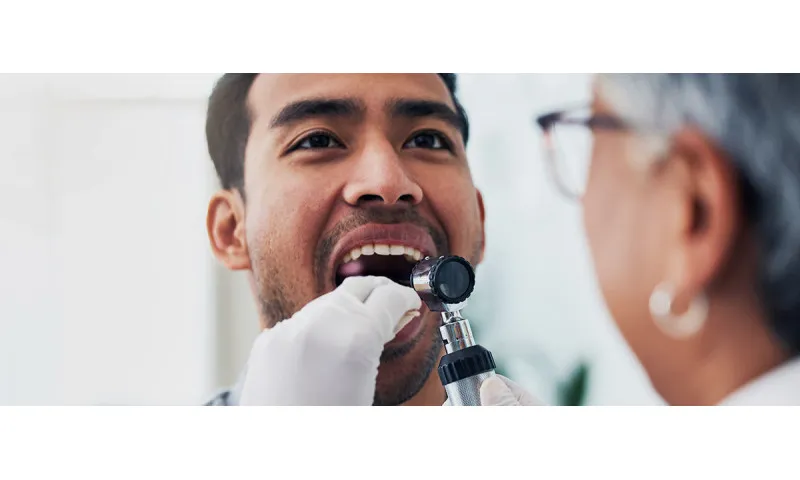Dental hygiene during the Stone Age
Findings from ancient tartar analyses indicate that even cavemen cleaned the spaces between their teeth with plant fibres. However, dental care was not a priority for our earliest ancestors. As the diet during the Stone Age contained hardly any sugar, tooth decay was rare. Nevertheless, our hairy relatives were not immune to it: the oldest recorded dental treatment dates back around 10,000 years. This is confirmed by recent finds from the Indus Valley in what is now Pakistan and India.
This changed over the course of human history: foods containing sugar slowly but increasingly gained in popularity. This led to an increase in cavities that needed to be treated. The term "dentistry" is mentioned for the first time in a text written by the Sumerians, who lived in southern Mesopotamia in the 3rd millennium BC. According to the text, tooth worms were held responsible for tooth decay. This idea persisted until the 17th century. However, the fight against worms had already been in full swing for a very long time.
When did people start brushing their teeth?
In the vast majority of cases, toothache is the result of poor dental hygiene and can be adequately prevented by brushing your teeth thoroughly and regularly.
Brushing teeth with the ancient Egyptians and Romans
The history of tooth brushing begins in ancient Egypt around 5,000 years ago. They came up with the pioneering idea of chewing the branches of the arak tree to clean their teeth. These special branches are frayed at one end, creating a brush-like tool. They are cut off and then chewed until one end is so frayed that it resembles a brush. The teeth are then brushed with it and the pieces of wood that break off are spat out. These tooth-cleaning twigs even contain natural fluoride.
These earliest of all chewing sticks therefore already contained a kind of natural toothpaste. In many Arab and African countries, this natural form of dental care - known as "Siwak" or "Miswak" - is still practised today.
It was not only the ancient Egyptians who emphasised clean teeth, oral hygiene was also important to the Greeks and Romans. They mainly used tooth powder, which consisted of various ingredients such as charcoal, ground bones and crushed oyster shells. They also used what were probably the first toothpicks in history. However, knowledge of the most helpful methods of tooth cleaning was not available to all cultures. In large parts of the world, for example, it was not the chewing of tooth-cleaning twigs that was widespread, but rinsing the mouth with water mixed with various substances such as salt, vinegar and - ironically - honey.
Brushing your teeth in the Middle Ages
During the Middle Ages (500 to 1500 AD), the practice of brushing teeth declined. People lacked an understanding of the importance of oral hygiene. In addition, there was no access to suitable aids, as was the case in previous eras. People often used their fingers or simple tools such as toothpicks or sharpened quills to clean their teeth. It is hardly surprising that this resulted in poor dental hygiene. Toothache and gum disease were therefore very common at this time.
Brushing your teeth during the Renaissance
During the Renaissance, people increasingly began to understand the role that oral hygiene played in their health. However, it still took some time for this knowledge to spread across all cultures. A bright white smile was not always a sign of health and prosperity. Quite the opposite:
At the time of Queen Elizabeth I (1533 to 1603), it was considered fashionable in Great Britain to have one's teeth blacked. The reason for this trend was the Queen's fondness for highly sugary treats. In combination with the very limited knowledge of dental care and oral hygiene at the time, this led to jet-black royal teeth - which the people took as an aesthetic model for a while. If you had travelled around the island in the early 17th century, you would have seen mouths full of dark teeth smiling at you.
The invention of the toothbrush
The first manual toothbrush with bristles is thought to have been invented in China in 1498: From then on, people brushed their teeth with the help of wild boar bristles attached to bamboo. However, this was only a supposed improvement on the methods used up to that point, as it came with a number of disadvantages:
On the one hand, bamboo becomes relatively soft as soon as it comes into contact with moisture, on the other hand, wild boar bristles are quite hard. Although this made the teeth a little cleaner, both they and the gums suffered from the rough bristles during the brushing process.
In the centuries that followed, experiments were therefore carried out with different animal hairs and handle materials, such as bone and metal. Eventually, horsehair bristles were used. However, as this is hollow on the inside, bacteria could collect in it, which in turn significantly reduced the usefulness of these brushes for dental hygiene.
When was the modern toothbrush invented?
The invention of nylon in the 1950s paved the way for our modern toothbrush. The soft brushes made from this material were much gentler on the gums and teeth. Until then, the use of high-quality, practical toothbrushes was mainly widespread among the wealthy upper class, as they were not exactly cheap. However, the discovery and industrial production of nylon meant that the masses now also benefited from the achievements of modern dental hygiene. Nylon bristles are still used on toothbrush heads today.
When was the electric toothbrush invented?
The first electric toothbrush was invented in 1939 by a Californian dentist named Dr Scott McGuire. His electric toothbrush, called the Broxodent, made it easier for people to clean their teeth effectively and easily. The Broxodent cleaned teeth with a rotating head driven by a small electric motor.
However, electric toothbrushes only became popular in the 1960s when they were mass-produced and marketed. In the decades following their invention, they matured immensely in terms of functionality and design.
The invention of toothpaste
As was the case with the toothbrush, modern toothpaste was not invented by a single person. Rather, its development was a long process that involved many innovations and improvements over time.
As already mentioned, our ancestors of earlier eras used various substances to keep their mouths hygienic. Not all of them fulfilled their purpose: in addition to the aforementioned mouthwash mixtures made from water mixed with salt, vinegar and honey, pastes made from ground eggshells and pumice stone were also used for dental hygiene.
Even an early form of bleaching dates back to the ancient Romans, who used human urine and crushed bones to give their teeth a bright lustre. These techniques were increasingly supplemented up until the 18th century, including the addition of powdered charcoal or sodium carbonate for a foaming effect.
From the middle of the 19th century, people increasingly used soap blocks to clean their teeth. Peppermint, menthol, honey and sugar were added to counteract the unpleasant flavour of the soap. Those who suffered from toothache as a result resorted to cocaine, among other things, to numb the pain. So there was still a long way to go before toothpaste as we know it today.
How long has modern toothpaste been around?
After numerous variations, an Englishman named Dr Washington Sheffield finally invented an early form of toothpaste as we know it today in the 19th century. His stroke of genius lay in the use of glycerine, with the help of which he was able to process the toothpaste powder into a reasonably palatable paste for the first time and at the same time prevent it from drying out. In the 20th century, toothpaste recipes were gradually improved. Fluoride, a mineral that prevents tooth decay (and which was already present in the aforementioned arak tree), was added to toothpaste and water supplies in many countries.
When did the first toothpaste come onto the market?
In 1956, fluoride-containing toothpaste (with stannous fluoride) was produced and sold for the mass market for the first time in the USA. Initially still in glass containers, later in the familiar toothpaste tube - first in the form of aluminium tubes, then from the middle of the 20th century in plastic tubes.
The invention of dental floss
Dental floss was invented in the 19th century by Levi Spear Parmly, a dentist from New Orleans. Parmly recommended that his patients use dental floss to clean the spaces between their teeth and to prophylactically prevent the formation of caries and tartar before it even started.
Dental floss was initially made from cotton and was generally not particularly durable. Over the years, however, improved materials were developed that were easier to use and more durable.
Interdental cleaning is catching on
Today, there are many different types of dental floss, which are made from different materials and are available in different strengths and thicknesses. Dental floss is used worldwide to remove plaque and tartar and to clean the spaces between teeth. A popular alternative to dental floss are fluoride-coated dental sticks - practical for wider interdental spaces.
Optimum interdental cleaning with interdental brushes
However, the best way to clean hard-to-reach areas such as interdental spaces is with interdental brushes. They usually consist of a short, cylindrical brush head that is attached to a plastic holder. Studies suggest that interdental brushes remove more plaque than dental floss after conventional brushing. Provided that the interdental spaces are large enough for cleaning with an interdental brush - they should therefore have the correct diameter. They are therefore available in various thicknesses and shapes, for example as bottle brushes or brushes. It is recommended to change them every four weeks.
 Swiss premium oral care
Swiss premium oral care








